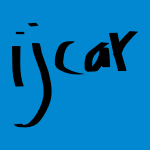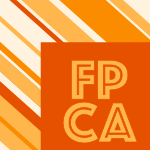38 papers:
 CHI-2015-0005RSP #mobile #named #physics #process
CHI-2015-0005RSP #mobile #named #physics #process- CrowdMonitor: Mobile Crowd Sensing for Assessing Physical and Digital Activities of Citizens during Emergencies (TL, CR, TS, VP), pp. 4083–4092.
 CHI-2015-TinatiKSLSS #case study #data analysis #design #framework #multi
CHI-2015-TinatiKSLSS #case study #data analysis #design #framework #multi- Designing for Citizen Data Analysis: A Cross-Sectional Case Study of a Multi-Domain Citizen Science Platform (RT, MVK, EPBS, MLR, RJS, NS), pp. 4069–4078.
 CHI-2014-EveleighJBBC #design
CHI-2014-EveleighJBBC #design- Designing for dabblers and deterring drop-outs in citizen science (AE, CJ, AB, PB, ALC), pp. 2985–2994.
 CHI-2014-GarbettCEGO #interface #people #trust
CHI-2014-GarbettCEGO #interface #people #trust- Finding “real people”: trust and diversity in the interface between professional and citizen journalists (ATG, RC, PE, MG, PO), pp. 3015–3024.
 CSCW-2014-MugarOHCJ #online
CSCW-2014-MugarOHCJ #online- Planet hunters and seafloor explorers: legitimate peripheral participation through practice proxies in online citizen science (GM, CSØ, KDH, KC, CBJ), pp. 109–119.
 DUXU-DI-2014-BillestrupS #case study
DUXU-DI-2014-BillestrupS #case study- E-government and the Digital Agenda for Europe — A Study of the User Involvement in the Digitalisation of Citizen Services in Denmark (JB, JS), pp. 71–80.
 DUXU-ELAS-2014-KarlinPC #experience #learning #online #user interface
DUXU-ELAS-2014-KarlinPC #experience #learning #online #user interface- Pumping Up the Citizen Muscle Bootcamp: Improving User Experience in Online Learning (BK, BP, AC), pp. 562–573.
 HCI-AS-2014-KangD #usability
HCI-AS-2014-KangD #usability- B2C Websites’ Usability for Chinese Senior Citizens (LK, HD), pp. 13–20.
 LCT-TRE-2014-BaldiniKLT #network #social #trust
LCT-TRE-2014-BaldiniKLT #network #social #trust- European Citizens and Their Trust in Social Networks (GB, IK, JL, MT), pp. 363–374.
 LCT-TRE-2014-LoureiroB
LCT-TRE-2014-LoureiroB- Active Ageing — Enhancing Digital Literacies in Elderly Citizens (AL, MB), pp. 450–459.
 SEKE-2014-DegrossiAFM #approach #risk management
SEKE-2014-DegrossiAFM #approach #risk management- Flood Citizen Observatory: a crowdsourcing-based approach for flood risk management in Brazil (LCD, JPdA, MCF, EMM), pp. 570–575.
 CHI-2013-Cottman-FieldsBR
CHI-2013-Cottman-FieldsBR- Virtual birding: extending an environmental pastime into the virtual world for citizen science (MCF, MB, PR), pp. 2029–2032.
 CHI-2013-Erete #perspective
CHI-2013-Erete #perspective- Protecting the home: exploring the roles of technology and citizen activism from a burglar’s perspective (SLE), pp. 2507–2516.
 CSCW-2013-KimMP #authoring #flexibility #framework #mobile #named #tool support
CSCW-2013-KimMP #authoring #flexibility #framework #mobile #named #tool support- Sensr: evaluating a flexible framework for authoring mobile data-collection tools for citizen science (SK, JM, EP), pp. 1453–1462.
 CSCW-2013-RobsonHKP #network #social
CSCW-2013-RobsonHKP #network #social- Comparing the use of social networking and traditional media channels for promoting citizen science (CR, MAH, CK, JSP), pp. 1463–1468.
 CSCW-2013-WangM #online #social #social media #trust
CSCW-2013-WangM #online #social #social media #trust- Trust in online news: comparing social media and official media use by chinese citizens (YW, GM), pp. 599–610.
 CSCW-2013-Wiggins #constraints
CSCW-2013-Wiggins #constraints- Free as in puppies: compensating for ict constraints in citizen science (AW), pp. 1469–1480.
 DUXU-PMT-2013-Walser #design #user interface
DUXU-PMT-2013-Walser #design #user interface- Engaging Citizens with UX Design (KW), pp. 427–436.
 DUXU-WM-2013-PhillipsFSSB #case study #design
DUXU-WM-2013-PhillipsFSSB #case study #design- Open Design: Non-professional User-Designers Creating Products for Citizen Science: A Case Study of Beekeepers (RDP, YF, KS, SS, SB), pp. 424–431.
 MoDELS-2013-IordanovAAHU #modelling #semantics #web
MoDELS-2013-IordanovAAHU #modelling #semantics #web- The Semantic Web as a Software Modeling Tool: An Application to Citizen Relationship Management (BI, AA, SA, TH, PU), pp. 589–603.
 MoDELS-2013-IordanovAAHU #modelling #semantics #web
MoDELS-2013-IordanovAAHU #modelling #semantics #web- The Semantic Web as a Software Modeling Tool: An Application to Citizen Relationship Management (BI, AA, SA, TH, PU), pp. 589–603.
 CSCW-2012-FarnhamKYT
CSCW-2012-FarnhamKYT- Puget sound off: fostering youth civic engagement through citizen journalism (SF, DK, VY, CT), pp. 285–294.
 CSCW-2012-RotmanPHPHPLJ #collaboration #motivation
CSCW-2012-RotmanPHPHPLJ #collaboration #motivation- Dynamic changes in motivation in collaborative citizen-science projects (DR, JP, JH, KP, DLH, CSP, DL, DWJ), pp. 217–226.
 CHI-2011-AssogbaRDM #visualisation
CHI-2011-AssogbaRDM #visualisation- Many bills: engaging citizens through visualizations of congressional legislation (YA, IR, JMD, MM), pp. 433–442.
 CHI-2011-KimRZPH #usability
CHI-2011-KimRZPH #usability- Creek watch: pairing usefulness and usability for successful citizen science (SK, CR, TZ, JSP, EMH), pp. 2125–2134.
 CHI-2009-LutherCSHJ #collaboration #named #online
CHI-2009-LutherCSHJ #collaboration #named #online- Pathfinder: an online collaboration environment for citizen scientists (KL, SC, KBS, AH, PJ), pp. 239–248.
 OCSC-2009-OzokGWNMW #health #usability
OCSC-2009-OzokGWNMW #health #usability- Usability and User Acceptance for Personal Health Records: A Perspective from Healthcare Citizens (AAO, APG, HW, MN, DM, JW), pp. 690–699.
 ICEIS-HCI-2008-PenichetTLGM #collaboration #communication #web
ICEIS-HCI-2008-PenichetTLGM #collaboration #communication #web- A Collaborative Web System to Improve Citizens-Administration Communication (VMRP, MT, MDL, JAG, FMS), pp. 308–315.
 ICEIS-SAIC-2008-SantosM #approach #semantics #web
ICEIS-SAIC-2008-SantosM #approach #semantics #web- Transparency in Citizen-Centric Services — A Traceability-based Approach on the Semantic Web (IJGdS, ERMM), pp. 184–189.
 CHI-2007-PalenL #future of
CHI-2007-PalenL #future of- Citizen communications in crisis: anticipating a future of ICT-supported public participation (LP, SBL), pp. 727–736.
 OCSC-2007-CarcilloR #bottom-up #classification #top-down
OCSC-2007-CarcilloR #bottom-up #classification #top-down- Tags for Citizens: Integrating Top-Down and Bottom-Up Classification in the Turin Municipality Website (FC, LR), pp. 256–264.
 ICEIS-SAIC-2007-SantosM #challenge #grid #towards
ICEIS-SAIC-2007-SantosM #challenge #grid #towards- E-Government and Grid Computing — Potentials and Challenges Towards Citizen-Centric Services (IJGdS, ERMM), pp. 144–148.
 ITiCSE-2006-Cosmo
ITiCSE-2006-Cosmo- Educating the e-citizen (RDC), p. 1.
 KDD-2006-CaruanaEMRSFHK #mining #predict
KDD-2006-CaruanaEMRSFHK #mining #predict- Mining citizen science data to predict orevalence of wild bird species (RC, MFE, AM, MR, DS, DF, WMH, SK), pp. 909–915.
 IJCAR-2006-TomanW #dependence #functional #logic #on the
IJCAR-2006-TomanW #dependence #functional #logic #on the- On Keys and Functional Dependencies as First-Class Citizens in Description Logics (DT, GEW), pp. 647–661.
 SIGMOD-2004-MehrotraBKVAHLMMWEH #named
SIGMOD-2004-MehrotraBKVAHLMMWEH #named- CAMAS: A Citizen Awareness System for Crisis Mitigation (SM, CTB, DVK, NV, KA, RH, HL, YM, AM, JW, RE, CH), pp. 955–956.
 ICEIS-v3-2003-SantanaR #named
ICEIS-v3-2003-SantanaR #named- Telework: Employment Opportunities for a Disabled Citizen (SS, NPdR), pp. 441–446.
 FPCA-1991-JonesL #functional #strict
FPCA-1991-JonesL #functional #strict- Unboxed Values as First Class Citizens in a Non-Strict Functional Language (SLPJ, JL), pp. 636–666.
 CHI-2015-0005RSP #mobile #named #physics #process
CHI-2015-0005RSP #mobile #named #physics #process CHI-2015-TinatiKSLSS #case study #data analysis #design #framework #multi
CHI-2015-TinatiKSLSS #case study #data analysis #design #framework #multi CHI-2014-EveleighJBBC #design
CHI-2014-EveleighJBBC #design CHI-2014-GarbettCEGO #interface #people #trust
CHI-2014-GarbettCEGO #interface #people #trust CSCW-2014-MugarOHCJ #online
CSCW-2014-MugarOHCJ #online DUXU-DI-2014-BillestrupS #case study
DUXU-DI-2014-BillestrupS #case study DUXU-ELAS-2014-KarlinPC #experience #learning #online #user interface
DUXU-ELAS-2014-KarlinPC #experience #learning #online #user interface HCI-AS-2014-KangD #usability
HCI-AS-2014-KangD #usability LCT-TRE-2014-BaldiniKLT #network #social #trust
LCT-TRE-2014-BaldiniKLT #network #social #trust LCT-TRE-2014-LoureiroB
LCT-TRE-2014-LoureiroB SEKE-2014-DegrossiAFM #approach #risk management
SEKE-2014-DegrossiAFM #approach #risk management CHI-2013-Cottman-FieldsBR
CHI-2013-Cottman-FieldsBR CHI-2013-Erete #perspective
CHI-2013-Erete #perspective CSCW-2013-KimMP #authoring #flexibility #framework #mobile #named #tool support
CSCW-2013-KimMP #authoring #flexibility #framework #mobile #named #tool support CSCW-2013-RobsonHKP #network #social
CSCW-2013-RobsonHKP #network #social CSCW-2013-WangM #online #social #social media #trust
CSCW-2013-WangM #online #social #social media #trust CSCW-2013-Wiggins #constraints
CSCW-2013-Wiggins #constraints DUXU-PMT-2013-Walser #design #user interface
DUXU-PMT-2013-Walser #design #user interface DUXU-WM-2013-PhillipsFSSB #case study #design
DUXU-WM-2013-PhillipsFSSB #case study #design MoDELS-2013-IordanovAAHU #modelling #semantics #web
MoDELS-2013-IordanovAAHU #modelling #semantics #web MoDELS-2013-IordanovAAHU #modelling #semantics #web
MoDELS-2013-IordanovAAHU #modelling #semantics #web CSCW-2012-FarnhamKYT
CSCW-2012-FarnhamKYT CSCW-2012-RotmanPHPHPLJ #collaboration #motivation
CSCW-2012-RotmanPHPHPLJ #collaboration #motivation CHI-2011-AssogbaRDM #visualisation
CHI-2011-AssogbaRDM #visualisation CHI-2011-KimRZPH #usability
CHI-2011-KimRZPH #usability CHI-2009-LutherCSHJ #collaboration #named #online
CHI-2009-LutherCSHJ #collaboration #named #online OCSC-2009-OzokGWNMW #health #usability
OCSC-2009-OzokGWNMW #health #usability ICEIS-HCI-2008-PenichetTLGM #collaboration #communication #web
ICEIS-HCI-2008-PenichetTLGM #collaboration #communication #web ICEIS-SAIC-2008-SantosM #approach #semantics #web
ICEIS-SAIC-2008-SantosM #approach #semantics #web CHI-2007-PalenL #future of
CHI-2007-PalenL #future of OCSC-2007-CarcilloR #bottom-up #classification #top-down
OCSC-2007-CarcilloR #bottom-up #classification #top-down ICEIS-SAIC-2007-SantosM #challenge #grid #towards
ICEIS-SAIC-2007-SantosM #challenge #grid #towards ITiCSE-2006-Cosmo
ITiCSE-2006-Cosmo KDD-2006-CaruanaEMRSFHK #mining #predict
KDD-2006-CaruanaEMRSFHK #mining #predict IJCAR-2006-TomanW #dependence #functional #logic #on the
IJCAR-2006-TomanW #dependence #functional #logic #on the SIGMOD-2004-MehrotraBKVAHLMMWEH #named
SIGMOD-2004-MehrotraBKVAHLMMWEH #named ICEIS-v3-2003-SantanaR #named
ICEIS-v3-2003-SantanaR #named FPCA-1991-JonesL #functional #strict
FPCA-1991-JonesL #functional #strict









